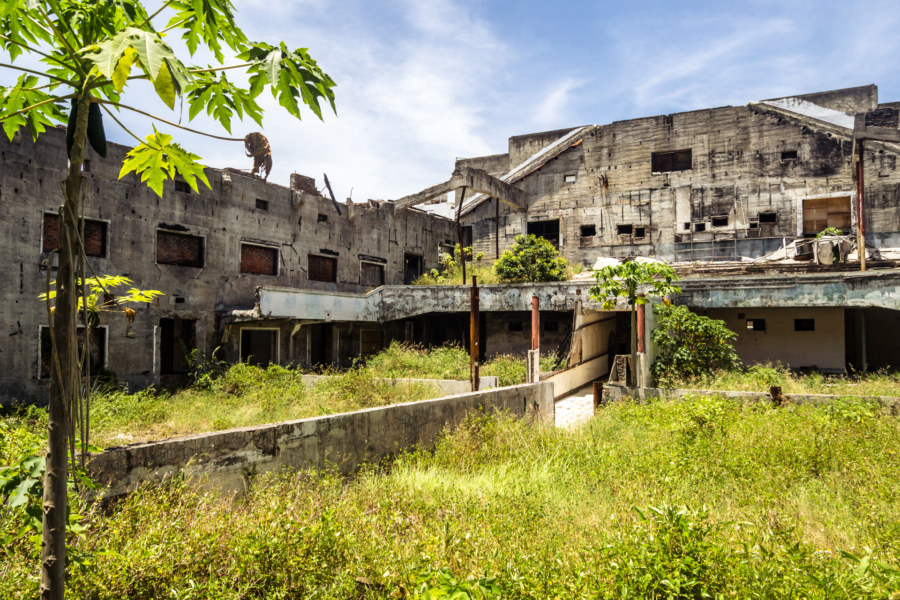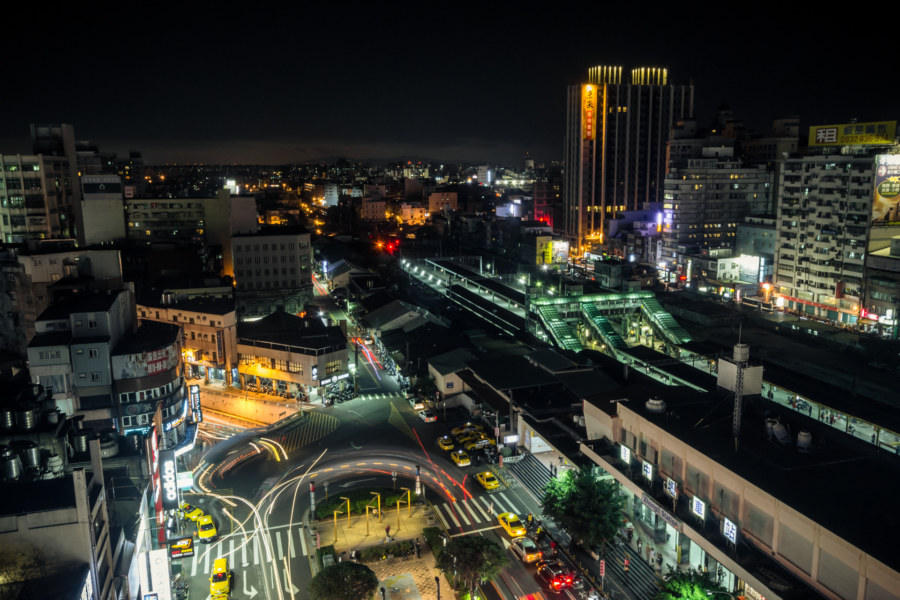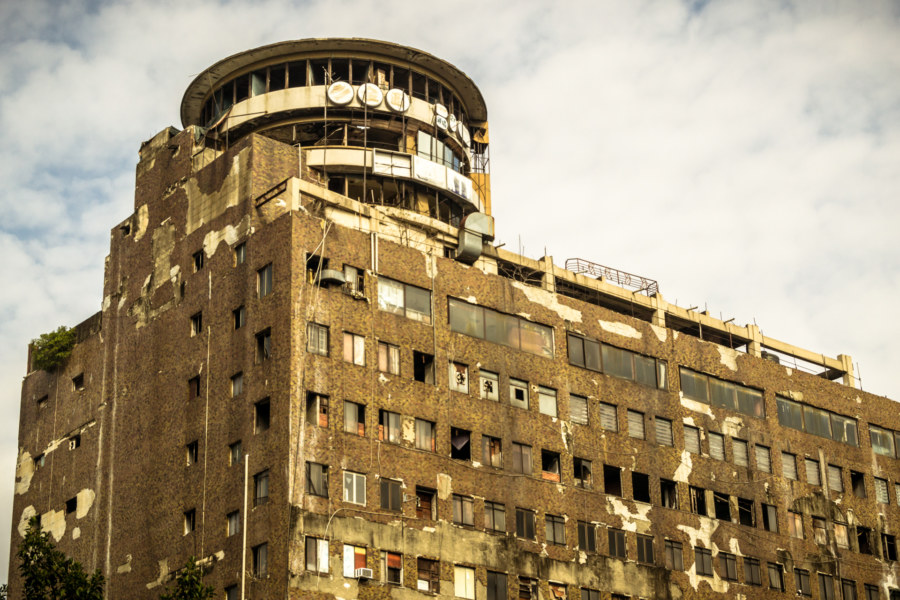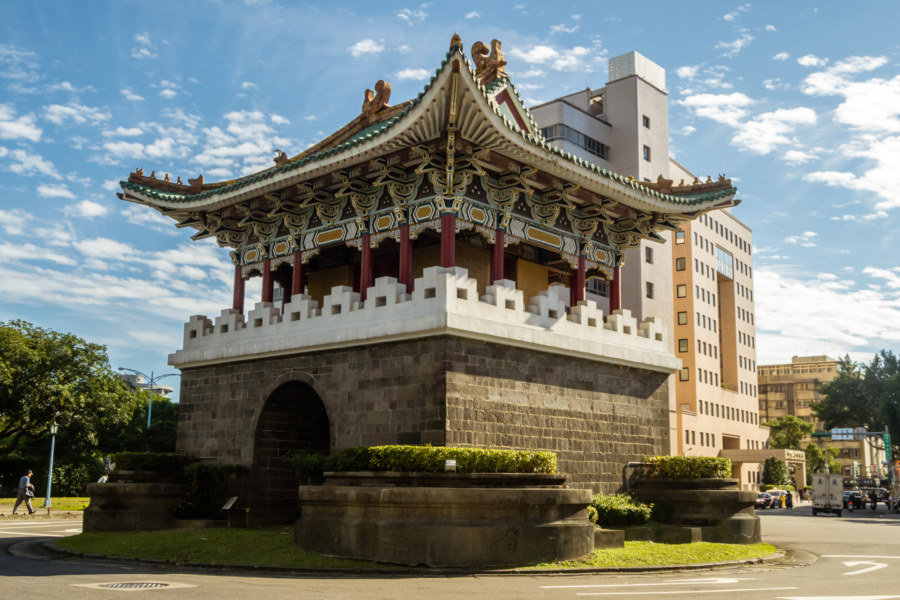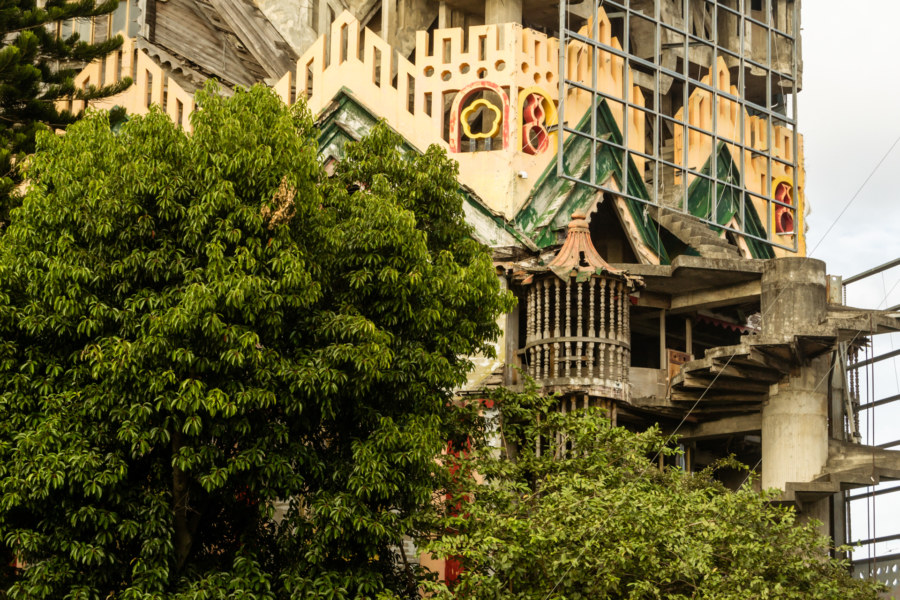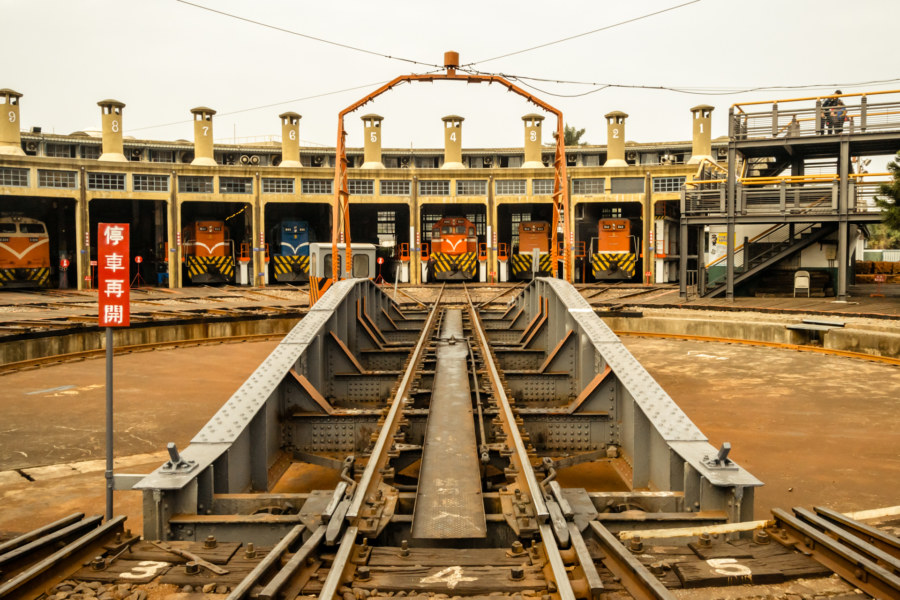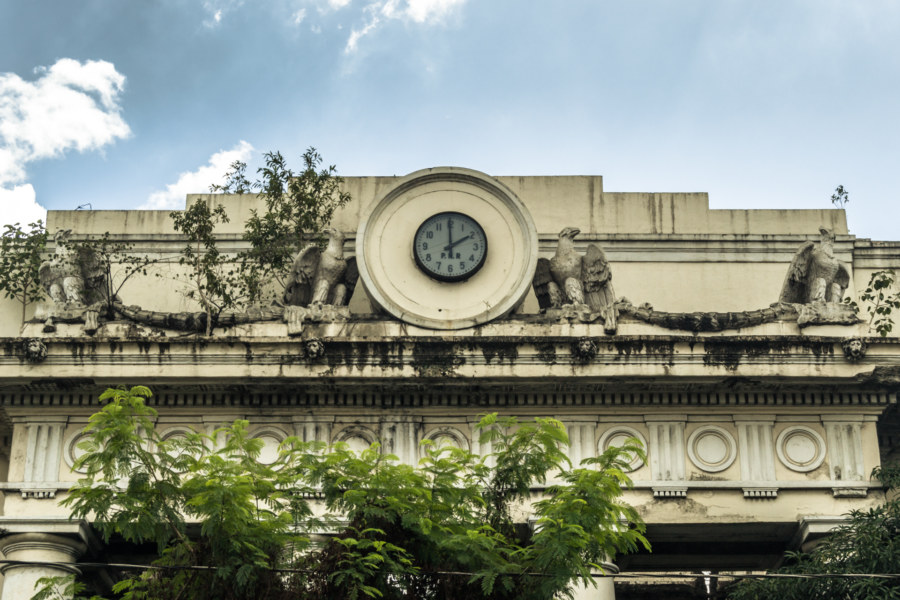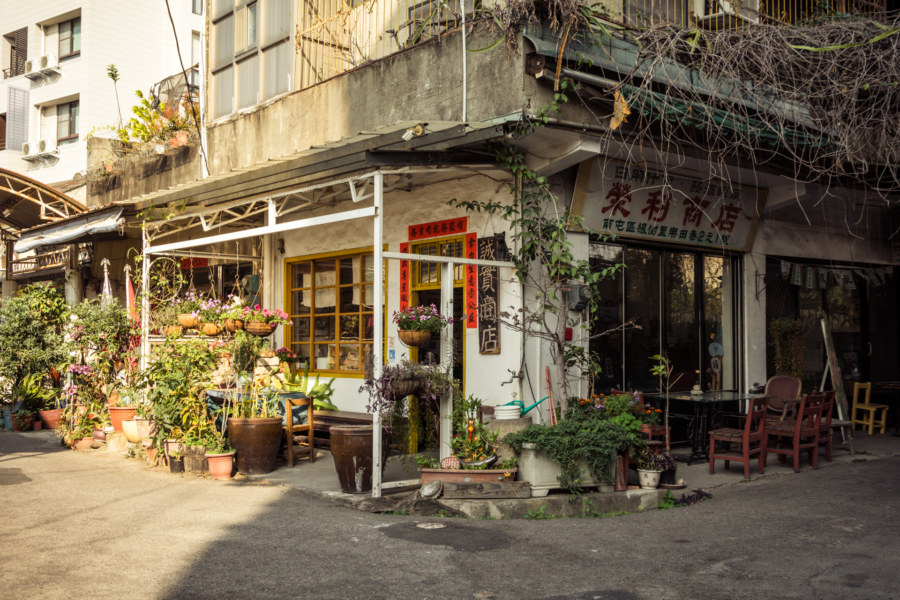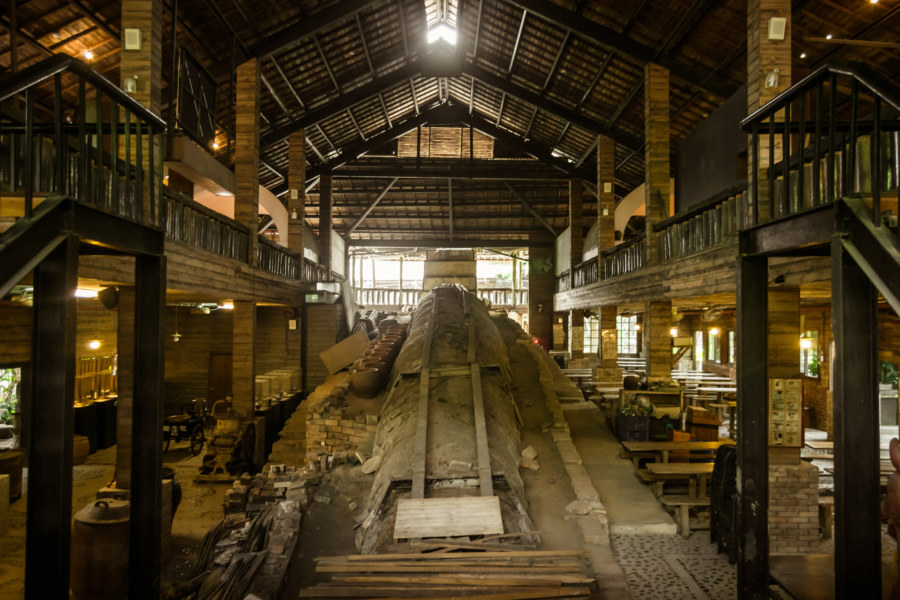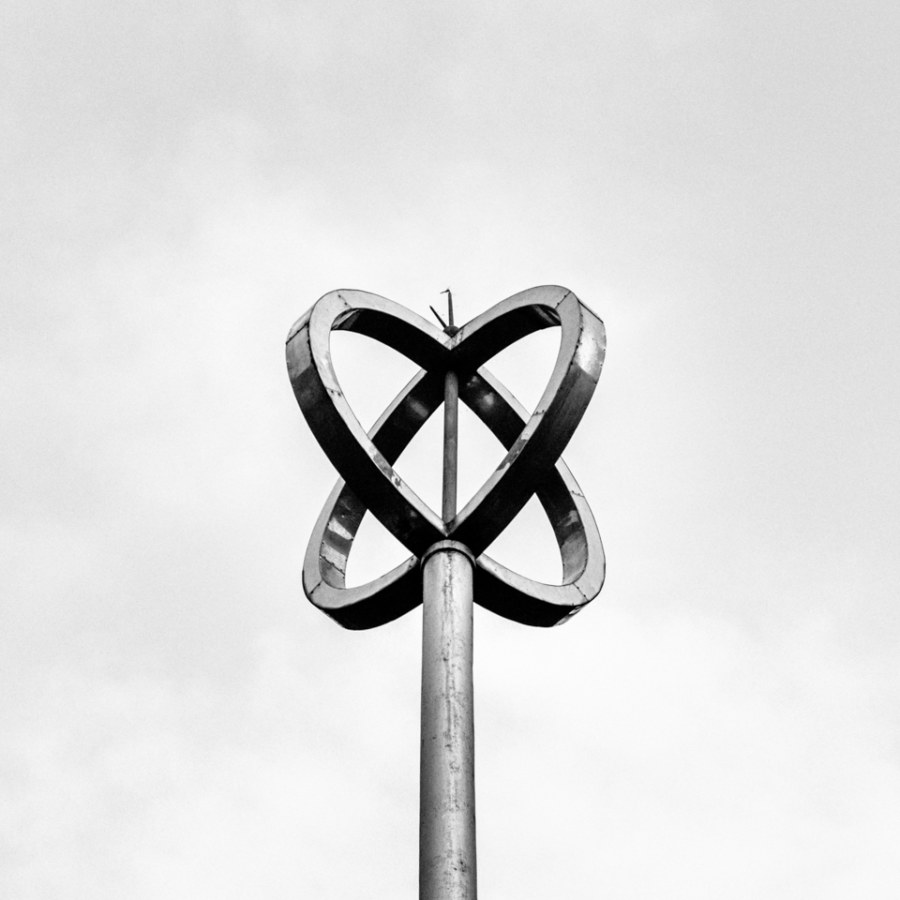In June 2015 I undertook a bicycle trip from Tainan to Taitung City, where I spent an extra day wandering around to get more of a feel for Taiwan’s remote southeastern capital. Mere minutes after leaving my hotel, immediately after chancing upon the historic Taitung Chinese Association 台東中華會館, I noticed the stark outline of an abandoned building at the end of a short laneway leading off of Zhōngzhèng Road 中正路. After taking a closer look I realized it was yet another abandoned movie theater, of which there are many scattered all around Taiwan.
This category mainly features location-specific content about individual points of interest. These might be historic sites, tourist attractions, abandoned places, or something else constrained by geography.
Zhongli Caishen Building 中壢財神大樓
In my first dispatch from Zhongli I shared a photograph of the Cáishén Building 財神大樓, a rundown entertainment complex next to the train station that I meant to explore at some point. Not long after posting that I got around to checking it out—and much to my surprise, despite the incredibly rundown exterior most of the building is still occupied by hotels, daytime dance clubs, mobile phone booths, and other businesses serving the many Southeast Asian migrant workers of Taoyuan. There is, however, one part of the building that seemed obviously abandoned from street level; the skeletal outline of some kind of UFO-like structure on the rooftop demanded further investigation.
Qianyue Building 千越大樓
The Qiānyuè Building 千越大樓 is one of the most recognizable ruins in central Taiwan. Located only a short distance from Taichung Station 台中車站, it is impossible to miss if you bother to look up at some point while walking deeper into the city. This mixed-use commercial and residential high-rise was originally built in the 1970s and, thanks to its location at the very heart of the famous Taichung Electronics Street 台中電子街商圈, reached its apex during the consumer electronics boom of the late 1980s and early 1990s.
Taipei Xiaonanmen 臺北府城小南門
Today is winter solstice, the shortest day of the year in the northern hemisphere, and it is a record-breaking 30°C in Taipei. In Chinese culture it is customary to consume tāngyuán (湯圓, glutinous rice balls typically immersed in hot, sweet soup) on winter solstice, better known to locals as Dōngzhì (冬至), a time when families gather together and celebrate growing one year older. Since I have no family here I will be lining up at 36 Yuánzǐ Shop (三六圓仔店) for a bowl sometime later on—though I might just skip this particular ritual if the line-up is too crazy. Two years ago I was informed, contrary to expectations, that you won’t actually age without eating tangyuan on dongzhi. If I miss it this year I suppose I won’t mind.
Longtan Monster House 龍潭怪怪屋
Longtan Monster House (龍潭怪怪屋) is a notorious architectural oddity on the northern edge of Longtan in Taoyuan, Taiwan. In Chinese it is also known as Yè Fābāo’s Monster House (葉發苞怪屋), after its owner and lead designer, and is officially named the Yeshan Building (葉山樓). It has been under construction for decades but at some point the money ran out and the owner has plastered it with advertisements, ostensibly to raise money to complete the project. Nowadays there is little to see beneath the incredible number of promotional banners hanging off the side of the building.
Changhua Roundhouse 彰化扇形車庫
One of the most extraordinary attractions in Taiwan is the historic Changhua Roundhouse 彰化扇形車庫, originally built in 1922 during Japanese colonial rule and still in operation today. Although information is hard to come by it seems that it might be the only roundhouse still operating in Asia—and certainly one of the oldest still in regular use anywhere in the world. Every other roundhouse I researched for this article has been abandoned, demolished, repurposed, or converted into a museum—and those rare few that are still operational have been mighty hard to date. As such, the Changhua Roundhouse is a dream to visit for a railway enthusiast like myself, particularly since the ambiance hasn’t been ruined by the sort of tacky treatment you’ll often find at Taiwanese tourist attractions. After signing in with the guard at the gate I had free run of the place—and as you can see from some of the following photos, nobody minded me getting shockingly close to moving trains as the mechanics went about their daily routines.
Paco Railway Station
Paco Railway Station was built in Paco, Manila, in 1915 during the American colonial period. Designed by William E. Parsons, an American architect mainly known for his work in the Philippines, it remained in service until the mid-1990s when it was partly demolished by a developer intent on building a mall next door. The ruins of that project, never completed, can still be found next to the old station, spreading decay like a cancer through this part of the city.
Maple Community Honest Shop 楓樹社區誠實商店
Taichung is home to an unusual social experiment: the Honest Store 誠實商店 in the Fēngshù Community 楓樹社區 (literally “Maple Community”) of Nantun, Taiwan. According to roundTAIWANround (through which I discovered the place) it was once a general store of the traditional variety that you’ll still find scattered around the countryside and in older neighbourhoods. Such shops have been fading into history for years, unable to compete with the modern chains that have become symbols of Taiwan’s culture of convenience. The shop would have shut down had the owner not experimented with a new model: locally-sourced goods, financial transparency, and no paid staff, relying on the honesty of its patrons to stay in business.
Shuili Snake Kiln 水里蛇窯
The Shuili Snake Kiln 水里蛇窯 is a wood-fired pottery kiln on the outskirts of Shuili, Nantou. The name is derived from the kiln’s serpentine shape, though to my eyes it looks more like a slug than a snake. Founded in 1927 by master potter Lín Jiāngsōng 林江松, it remained a family business for generations before being opened to the public as a “ceramics park” in 1993.
The Geographic Center of Taiwan 台灣地理中心
The Geographic Center of Taiwan (台灣地理中心) is a modest roadside attraction at Hǔtóushān (虎頭山, literally “Tiger Head Mountain”) in Puli, Nantou, on the way to bigger attractions like Qingjing Farm (清境農場). As the name implies, it marks the geographic center of the island of Taiwan, albeit with a bit of a twist: there are actually two monuments here, one at the base of the mountain and another near the peak at 555 meters above sea level. It’s about a ten minute hike to get to the real center of Taiwan!
